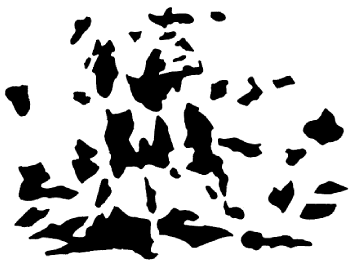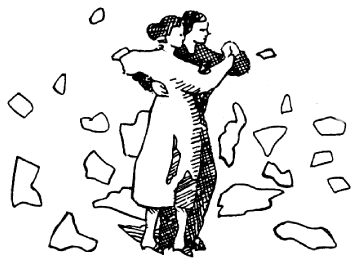

Sheldrake's hidden puzzle
Collective consciousness is something that within spiritual circles is quite popular. The concept was theorized by philosopher (David) Emile Durkheim and was written about in his dissertation Division of Labour in Society in 1893. It refers to set shared beliefs, ideas, and knowledge that are a unifying source within society.
The totality of beliefs and sentiments common to the average members of a society forms a determinate system with a life of its own. It can be termed the collective or common consciousness.
Emile Durkheim
Things get a little more spiritual when you start to look at what Carl Jung calls the collective unconscious.
Collective unconscious
Many people tend to believe that we are connected on some sort of telepathic or conscious level. A lot of the knowledge we have as humans seems to often just be known and not learned by observation. It was Carl Jung who came up with the concept of the 'collective unconscious'. It is the belief that we are all born with knowledge and imagery that come from our ancestors.
The collective unconscious consists of the sum of the instincts and their correlates, the archetypes. Just as everybody possesses instincts, so he also possesses a stock of archetypal images.
Carl Jung
An example of shared knowledge or collective consciousness was observed in the 1950's in what was called the hundredth monkey phenomenon.
Hundreth monkey phenomenon
In the early 1950s, the primatologists would provide the monkeys on Koshima Island in Japan with food such as sweet potato and wheat. The food would be left out in open areas for them to enjoy while they could also be observed. After some time, one of the subjects who was an 18-year-old female by the name of "Imo" discovered that the sand and grit could be removed from the sweet potatoes by washing them in water. Her family and friends soon learnt this trick and copied this behaviour. Soon many of the monkeys were observed washing the potatoes before eating them. What was interesting about this behaviour was that it seemed the younger monkeys taught the older monkeys how to do this. Of course, normally the older monkeys would show the children. This went on for several years. It is then claimed that a 'remarkable event' occurred on Koshima island in the fall of 1958.
While the monkeys on the island had learnt the behaviour from observing one another, once the one-hundredth monkey learnt this skill, monkeys on other islands who had not witnessed this skill started washing their potatoes in the same way. It was as if they suddenly knew or learnt this skill on some sort of unconscious level.
You can read more here: The hundredth monkey phenomenon and the paranormal
Was this an example of collective consciousness?
Sheldrake's hidden puzzle
Author and renowned psychical researcher Rupert Sheldrake is famously known for his writings on the concept of morphic resonance.
the idea of mysterious telepathy-type interconnections between organisms and of collective memories within species
I have briefly touched on this concept in the article Are animals psychic? as it is offered as a possible explanation as to why a dog seems to know when its owner is coming home for example.
In order to try and understand if there is some sort of collective consciousness or source of knowledge that we all have access to, Sheldrake conducted an experiment, initially over television by projecting two images (unseen by the World at that point in time) which had hidden imagery embedded, much like an optical illusion.
Picture 1

Picture 2

Look at the pictures carefully and note down what you see! The answers will be revealed below.
Sheldrake's hidden puzzle
First, there was a series of three television experiments that used hidden images in puzzle pictures. The experiment has three steps. You start by showing two of these puzzle pictures to a group of test subjects to establish a base line for how easily the hidden picture in each can be recognized. Next, on TV so that you can reach large numbers of people, you teach the TV viewers how to see one of the hidden images, but do not show the other. Finally, you get a new group of test subjects who did not see or hear about the TV show, and again test their ability to recognize the hidden images. The experimental question is, if lots of people learn to spot the hidden image in the puzzle picture, then does that make it easier for other people to spot it as well?
The first of these TV experiments was done in Britain in 1983 with 2 million viewers. Several thousand people were then tested in different parts of the world and the result was very positive and significant. The percentage recognizing the hidden image shown on television increased after this broadcast whereas the percentage recognizing the control picture, the one that wasn’t shown on TV, didn’t change.
This was then done on a larger scale on BBC television in 1984 with 8 million viewers. It was on one of the popular science programs called Tomorrow’s World. Now in that one, the image to be shown was selected at random, live, at the moment of broadcast. Post-broadcast tests were then carried out in North America, in Western Europe, and in the Southern Hemisphere, particularly South Africa. The results are puzzling. The percentage of people recognizing the hidden image in the picture that was shown on television increased very significantly in Western Europe, but not in North America, and in neither case was there a change in the control picture. So there seems to have been an effect, but the effect was confined to Western Europe. Now at first this looks as if it might be a distance effect but I don’t expect distance effects. Then, in looking at the data from South Africa, there was also an effect there, although not as significant because the sample size was rather small. One possibility is that this has to do with people being in similar time zones, being more in phase. South Africa and Western Europe are only one hour different from Britain, whereas America is 5 to 8 hours different.
The third experiment was done in West Germany on North German Television in early 1985. There again the control picture showed no change at all. The only change was for the puzzle picture shown on TV. But this time, after the pictures had been shown on German television, it seemed to become harder for people to spot in England. Not in America. In America there was again no effect. But in other parts of Europe, particularly in England, there was a significant effect but a negative one. Another thing that happened in the German experiment was that people, even in North America, started giving the right answers to the pictures shown in the previous BBC experiment. So there were a number of anomalous features – rather puzzling and bizarre!
Rupert Sheldrake
https://www.context.org/iclib/ic12/sheldrak/
While initially when people first saw the images, they found it hard to see what was there. Like many optical illusions, sometimes you need someone to point it out to you. Once they do you wonder why it took you so long! As more and more people saw the image, people started to identify it much faster even though they hadn't seen it before. Was this because they were tapping into some sort of collective knowledge?
Here is the reveal of the two images:
Picture 1

Picture 2

While this research is often criticised, it is an interesting concept and one that you do have to wonder about, in particular, I think about its connection to what we think about ghosts.
Collective consciousness and the paranormal
We know that parapsychologists have spent a lot of time and work studying the human mind and what it could in fact be capable of. In 1972, there was an experiment dubbed 'The Philip Experiment' where a group used their collective thought to see if they could conjure a ghost. They claimed the experiment a success. By thinking and talking about a fictional character, they seemingly created a ghost out of thin air. If we do indeed inherit our knowledge on some sort of collective unconscious level, can we somehow unknowingly project or tap into this when we are seeking answers out in the paranormal world? A lot of people for example think that when they are using items such as a pendulum to answer a question, while many put the answers down to unconscious movements of the hand making it move, what if our unconscious is actually making it move that way for a reason. Maybe the answers are there deep in our unconscious waiting to be discovered? While we may not a person's history consciously, is their information or their story sitting somewhere that we can 'tap into' on some kind of psychic level? Are we then projecting this activity ourselves when we feel we are communicating with the spirit just by thinking about them?
There is a lot to digest and think about here so I am going to let this sit with you for a bit and I want you to sit back and truely think about what it is that could be happening out there. While the popular belief is that a spirit is someone who has passed away, how is it that we are able to have these experiences? Is it something we already know on some sort of level? Are we then somehow unknowingly projecting this out into the world and creating our own 'Philips'?
Did you study the pictures above? how long did it take you to identify? Do you believe in a form of collective consciousness?
There is a lot of material on Sheldrake's website which I recommend you take the time to look at and even pick up some of his books. https://www.sheldrake.org/
References:
https://www.context.org/iclib/ic12/sheldrak/
The Presence of the Past: Morphic Resonance and the Habits of Nature by Rupert Sheldrake First published 1988
https://www.sheldrake.org/
Lifetide by Dr Lyall Watson (1979)
https://sociologydictionary.org/collective-consciousness/
http://durkheim.uchicago.edu/Biography.html
Cover Photo: Photo by Pixabay: https://www.pexels.com/photo/assemble-challenge-combine-creativity-269399/
If you enjoy LLIFS, consider buying me a book (otherwise known as buy me a coffee but I don't drink coffee and I LOVE books). Your donation helps to fund the LLIFS website so everyone can continue to access great paranormal content and resources for FREE!

Top pages with similar subjects
Don't forget to follow the Facebook page for regular updates
Join the mailing list to receive weekly updates of NEW articles. Never miss an article again!
Buy the latest and past issues Haunted Magazine
Check out the books written by LLIFS
Comments
-
Natalie Vujovich 3 years ago
To me this is a similar concept to the mass hallucination that a lot of cynics say anything paranormal is. A group of people all thinking they saw or heard the same thing. But is it an hallucination? As for the pictures, nope, didn't get them until I saw what they were. Never good get those 3D pictures either though.